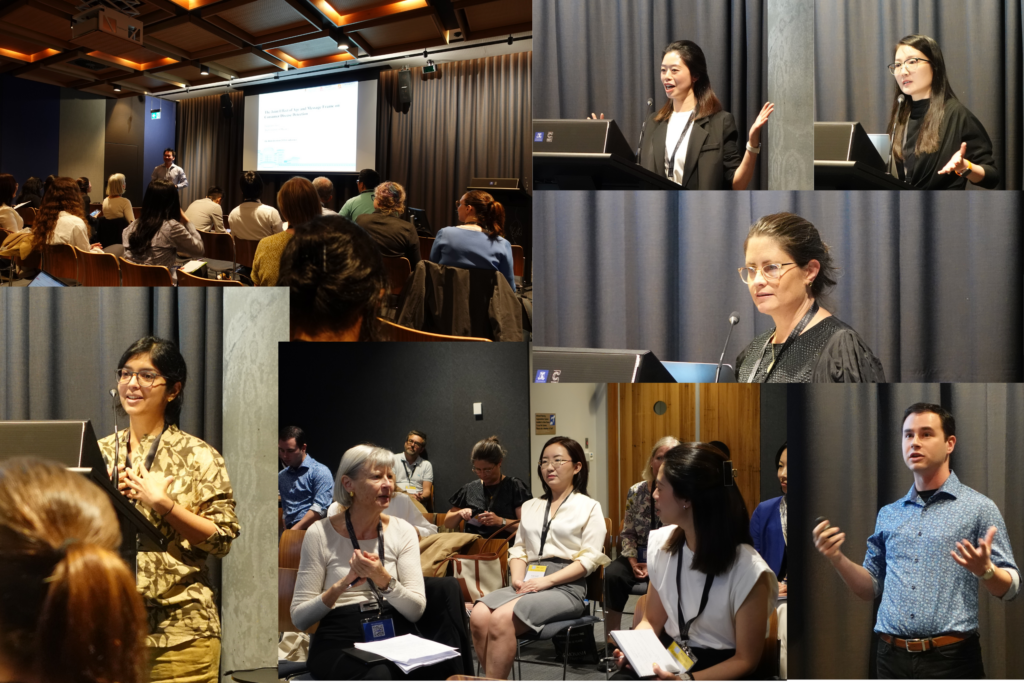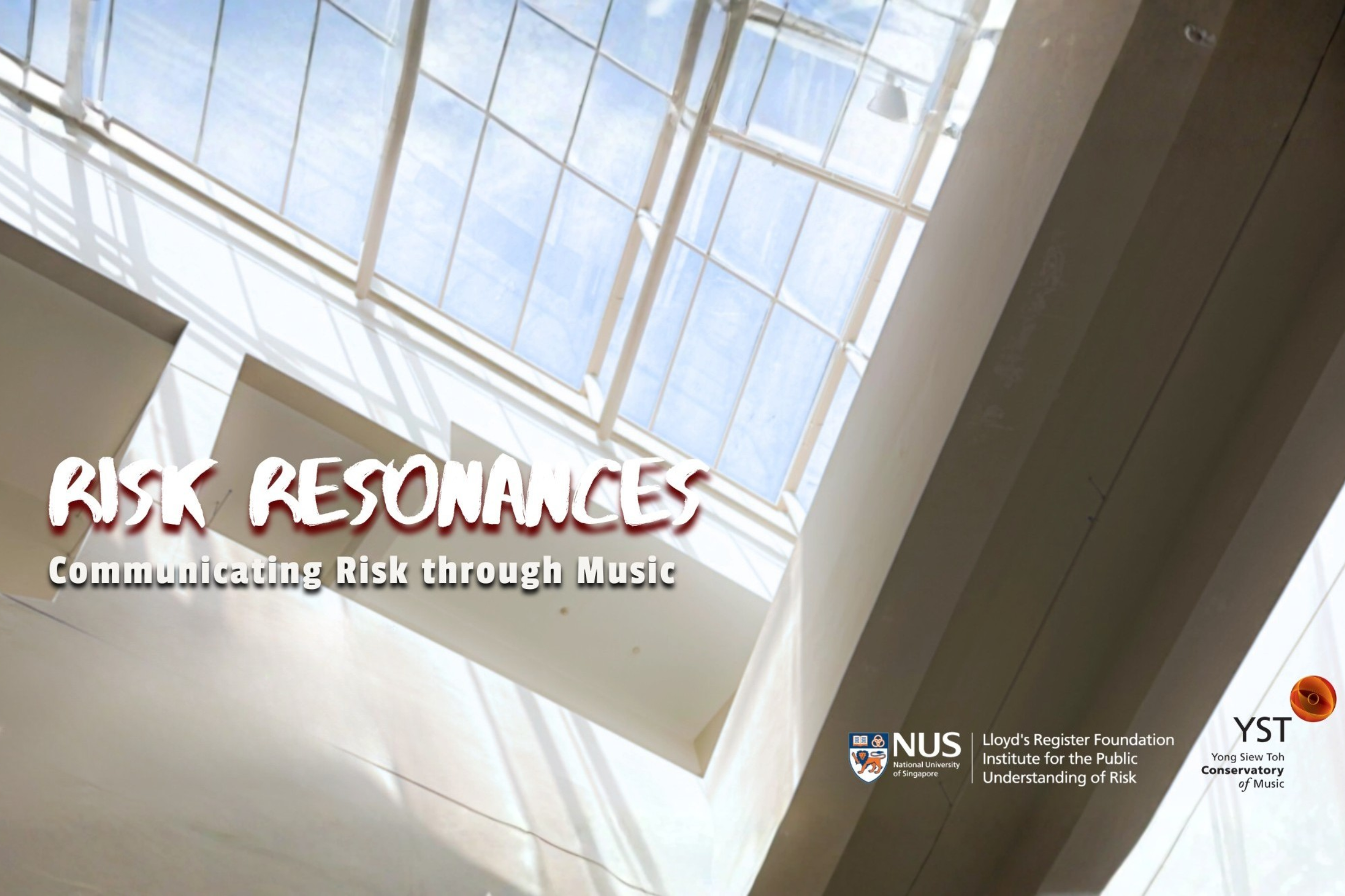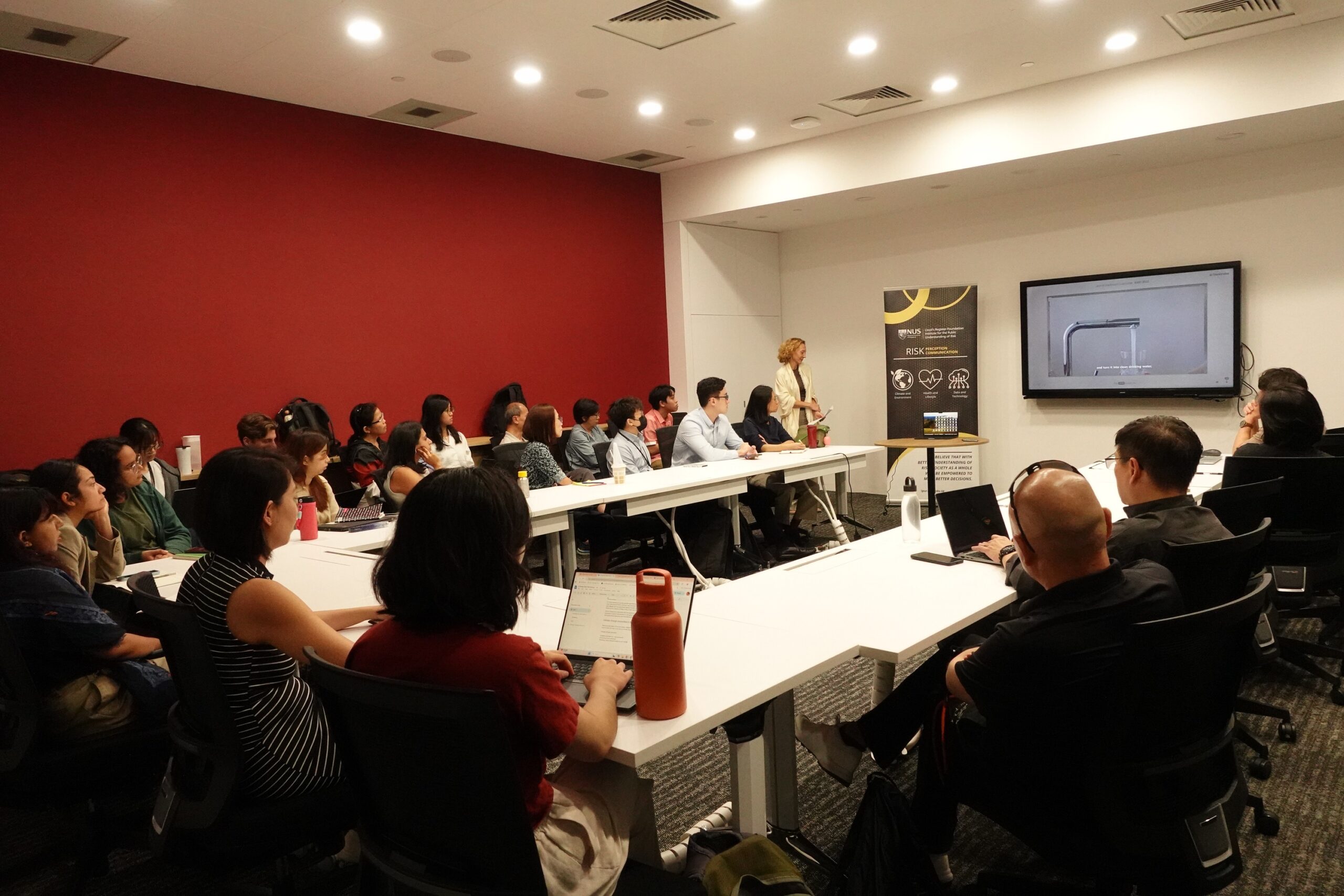
How can we ensure that society as a whole is prepared for broad implicating risks such as natural hazards while at the same time taking action against everyday risks such as health and safety? This intersection of risks would require a clear and informed understanding of different skills and concepts including risk communication, behavioural adaptation and decision-making.
The Risk Quotient 2024 addressed this topic from a lens of academic insight, offering viewpoints and considerations not just for further research but potential implementation into policy and societal impact. Jointly organised by IPUR and the Melbourne Centre for Behaviour Change (MCBC), the conference was held on 29 February in Melbourne Connect and featured the theme: Intersecting risks: Perils, Perceptions and Possibilities. Each of the four sessions honed in on a different aspect of the conference theme to provide a holistic structure for greater discussions.
Session 1: Disaster Management and Resilience
Disaster and Crisis Resilience: How Natural Disasters and Pandemic Crises Differ with Respect to Social Resilience Impacts [Prof Renate Schubert]
Prof Schubert said social resilience is key for societies and communities to cope with, recover from and adapt to natural disasters, pandemics and other disruptions. Adequate indicators and constantly repeated surveys are needed to assess social resilience and social resilience changes. One point she raised in the Q&A was that risk communicators need to be adaptable in response to evolving events, and that sometimes a crisis can lead to a better way of doing thigs. She gave an example of how COVID-19 paved the way for remote working arrangements in order for economies and workplaces to still function.
Railway Risk Management and Disaster Countermeasures Caused By Extreme Weather Associated With Climate Change [Hiroyuki Morishima]
Hiroyuki noted that between 1872 and 1986, there were 88 serious accidents on the Japanese National Railway as a result of natural disasters. He presented two disaster prevention measures implemented as a result which are now a staple in the country:
- Driving regulations (made by reading rain gauges, water level gauges, snow depth gauges, etc.)
- Installation of protective structure and disaster detection sensors
While risk of railways associated with natural disasters cannot be reduced to zero, efforts should be made to reduce it as much as possible. Railway operators are primarily responsible for natural disaster risk management, including effort to research and develop new technologies. In time, passengers themselves should manage their own risks, said Hiroyuki.
Understanding and Reducing Disaster Health Risks: A Foundational Framework to Advance Future Research and Knowledge Integration [Dr Lennart Reifels]
Dr Reifels presented his work applying the UN’s SENDAI Framework for disaster risk reduction and the WHO Health EDRM Framework to the context of mental health. As risks are increasingly expressed in terms of human well-being, the term “disaster health risk” can be used to refer to the probability of adverse health impacts resulting from the interplay of four key elements – hazard, exposure, vulnerability, and capacity. Some of the research gaps he addressed were that most studies are limited to a selection of risk elements and are addressed at individual or community levels, and there is a need to broaden the traditionally narrow window and spectrum of post-disaster mental health support.
The Effect of Disasters on Consumer Behaviour [Yan Huo]
Yan Huo discussed how disasters can significantly impact consumer habits. As disasters may result in financial difficulties, upward counterfactual thinking can motivate people to adopt thrifty behaviour to cope with the financial challenges. Conversely, disasters could prompt individuals to have downward counterfactual thinking and be grateful that they avoided the worst outcome (e.g., death), increasing confidence of financing financial challenges, leading to purchases with less restraint.
Upward counterfactual thinking triggers the victim mindset. Victim mindset leads to a lack of control, less optimism and confidence in financial decision-making. Downward counterfactual thinking triggers the survival mindset, which increases self-confidence to adjust to the environment. Her results suggest that reminding people of low social support may promote thrifty consumption patterns and encourage consumers to save for the future.
Session 2: Health Risk Perceptions and Disease Mitigation
Motivating Consumers in Disease Detection by Message Framing: The Moderating Role of Age [Associate Professor Chen Fangyuan]
In her presentation, Associate Prof Chen said procrastination in disease detection can be harmful, increasing morbidity amongst other consequences. She presented gain vs. loss framing effects which offer different utility on the part of the communicator.
Gain-framed messages are more effective for older adults, while loss-framed messages are more effective for younger adults. Associate Prof Chen said information diagnosticity might be one possible explanation: Negative information is more diagnostic than positive information because of its unambiguity. Her results showed that for younger adults, the loss-framed messages were more persuasive, while the gain-framed messages were more persuasive for older adults. The results also suggest that negative information is not always more diagnostic than positive information, and demonstrates the effect of aging on information diagnosticity perceptions.
One question posed to her was whether the observed effects might be due to younger people feeling there is generally a lower chance for them to have the disease to begin with. Associate Prof Chen acknowledged the possibility of this, but reminded that her study included a covariate measure on perceived risk of getting the disease.
Social Network Size and Perceptions of Risk of Disease Infection [Assistant Professor Kao Si]
Assistant Prof Kao found in his study that network size is a vital determinant of people’s perceptions of risk disease infection. Affective states can alter people’s relative reliance on tie number vs. tie strength as judgmental cues which could have implications for a wide range of behaviours and outcomes in social contexts.
Do Financial Incentives Increase COVID-19 Vaccination? [Dr Bhoomija Ranjan]
Dr Ranjan’s study modelled the adoption of COVID-19 vaccines across all US states and studied the roles of all offered financial incentives on vaccine adoption. She found that vaccination speed increased when incentives were offered – affected most by high magnitude cash incentives. Vaccination speed is also affected by concerns about the COVID-19 vaccine – states with higher levels of concern had lower vaccination rates. One question posed was whether US states could have saved millions of dollars if they enforced punitive consequences (e.g., lockdowns until 90% of vaccination rate achieved rather than reward incentives). She said that they looked at many incentive types, and only one city in the US had a “stick” incentive (vs. the “carrot”), so there was insufficient data they had to investigate this.
Mitigating Aging-Related Risks to Support Healthy and Purposeful Longevity in Singapore [Dr Shuna Khoo]
Dr Khoo’s pre-intervention baseline study intended to capture how effective future interventions are. One question asked was the goals of such a longevity study. She quipped that some of the goals include intergenerational bonding where the young and old learn/grow and benefit from interacting with each other.
Keynote: The role of risk in informing climate change action – a help or a hindrance? [Professor Kathryn Bowen]
Prof Bowen gave a hopeful plea to the challenge of climate change – that what concerns us greatly also provides us opportunity to make the change that matters. One question she received was whether climate is too big and catastrophic to solve. She noted that there are media channels that primarily report good news and suggested that we reduce reliance on mainstream media and remember our own agency to act over the problems we see. We can work on an individual level, understanding our power in the community (e.g., getting involved in our community, writing letters to MPs).
Session 3: Influence of Emotions, Mindsets and Behaviours on Decision Making
Risk Preferences in Choice for Sad Others [Associate Professor Gerri Spassova]
Associate Prof Spassova’s study investigated the question: Does the emotional state of the decision target influence risk preferences? In decisions for self, sadness increases preference for risk. People behave in a manner consistent with assimilated emotion but choose something less risky for others who are feeling sad. Sadness signals vulnerability, low status and power and triggers a prosocial response in others.
From Societal Economic Threats to Personal Anxieties: The Role of Social Representations [Elena Cherniaev]
Elena’s study aimed to examine the structure and content of social representations of societal economic threats. She described the fear of foreign policy processes and actions of authorities in Russia, resulting in widespread deteriorating of health. Fears of growing social injustice, declining incomes, rising prices for goods, problems obtaining medical care remain relevant in Russia.
Safety in (Irrelevant) Numbers: Sharing a Common Fate Increases Risk Tolerance [Associate Professor Han Gong]
In Associate Prof Han’s presentation, he summarised that greater risk tolerance in larger groups when exposed to common risks because of shared fate perceptions increases perceived security.
Session 4: Climate Change Adaptation
Evaluating the Impact of Climate Risk Scores on Property Purchase Decisions [Dr Omid Ghasemi]
Dr Ghasemi’s study had three main research questions:
- To what extent do people incorporate risk information in their judgment when buying property?
- Does the granularity and time-frame of risk scores influence participants’ perception of risk?
- Is there a relationship between individual characteristics, such as their beliefs in climate change and their experiences with extreme weather events?
He found that greater experience of disaster and climate belief were positively related to willingness to buy low-risk properties. Greater perceived and expected risk due to climate change were negatively related to willingness to buy high-risk properties (i.e., less willing to buy high-risk properties). Individuals, regardless of their experience of the risk, incorporate risk information when indicating their willingness to purchase property.
Water Security, Environmental Risk Perceptions and Natural Disaster Information-Seeking – Global Insights from the Lloyd’s Register Foundation 2021 World Risk Poll [Joshua Inwald]
Joshua’s study found that 25% of participants in the World Risk Poll reported water insecurity, mostly concentrated in the Global South. Adding that severe weather concern predicts water safety concern more strongly than climate change concern, especially for those who experience water insecurity. He provided some recommendations for communicating about threats to water security:
- Water insecurity is most common in high water stress regions, so target risk communication to these areas.
- Communicate through local news and emergency services, to help water insecure people feel prepared for future disasters.
- Emphasise the threat severe weather events pose to water security, in addition to explaining the role of climate change.


